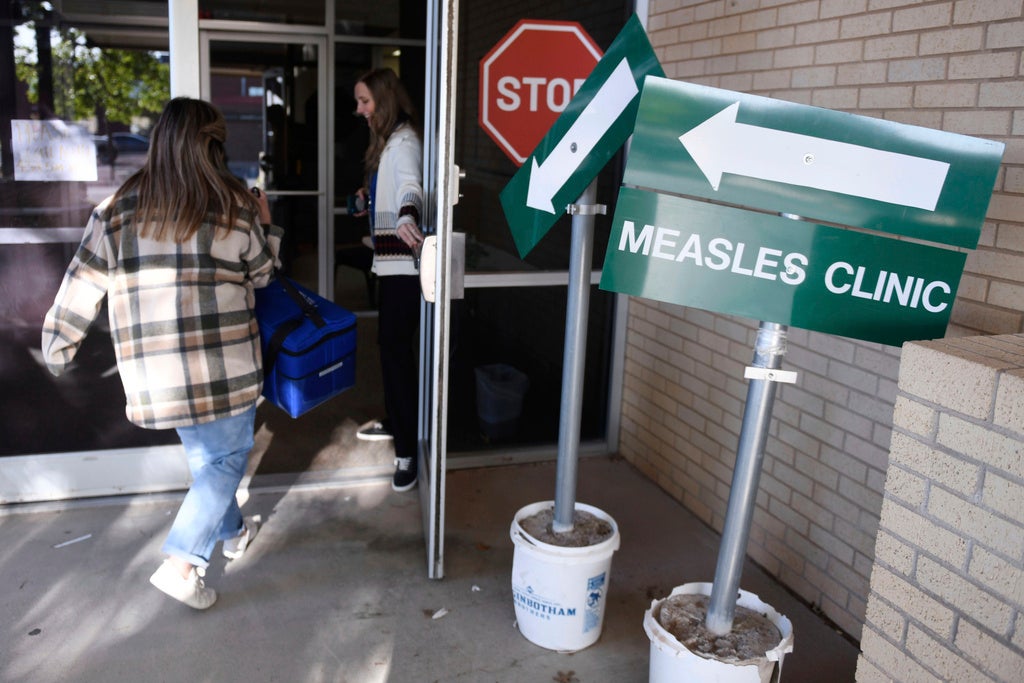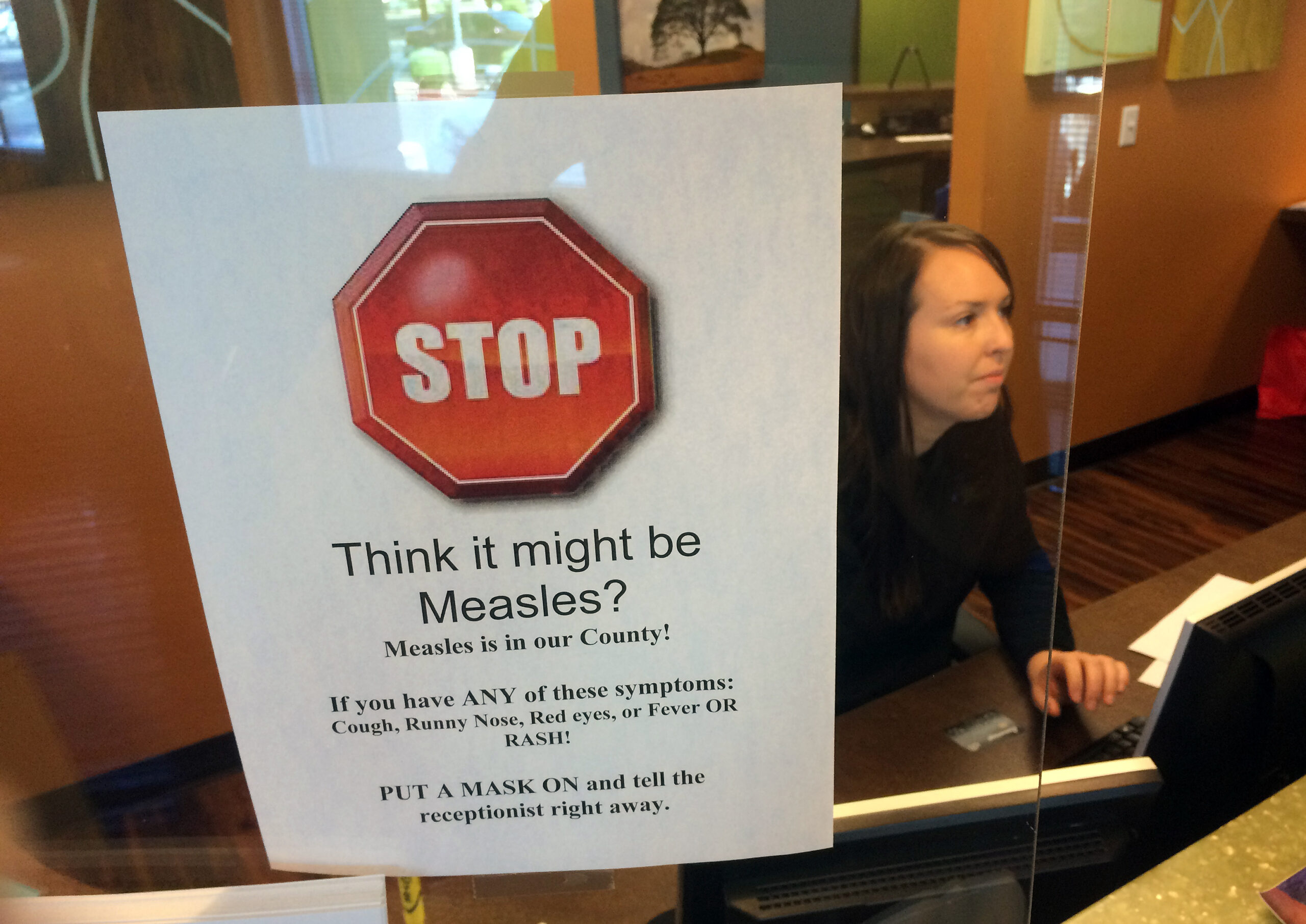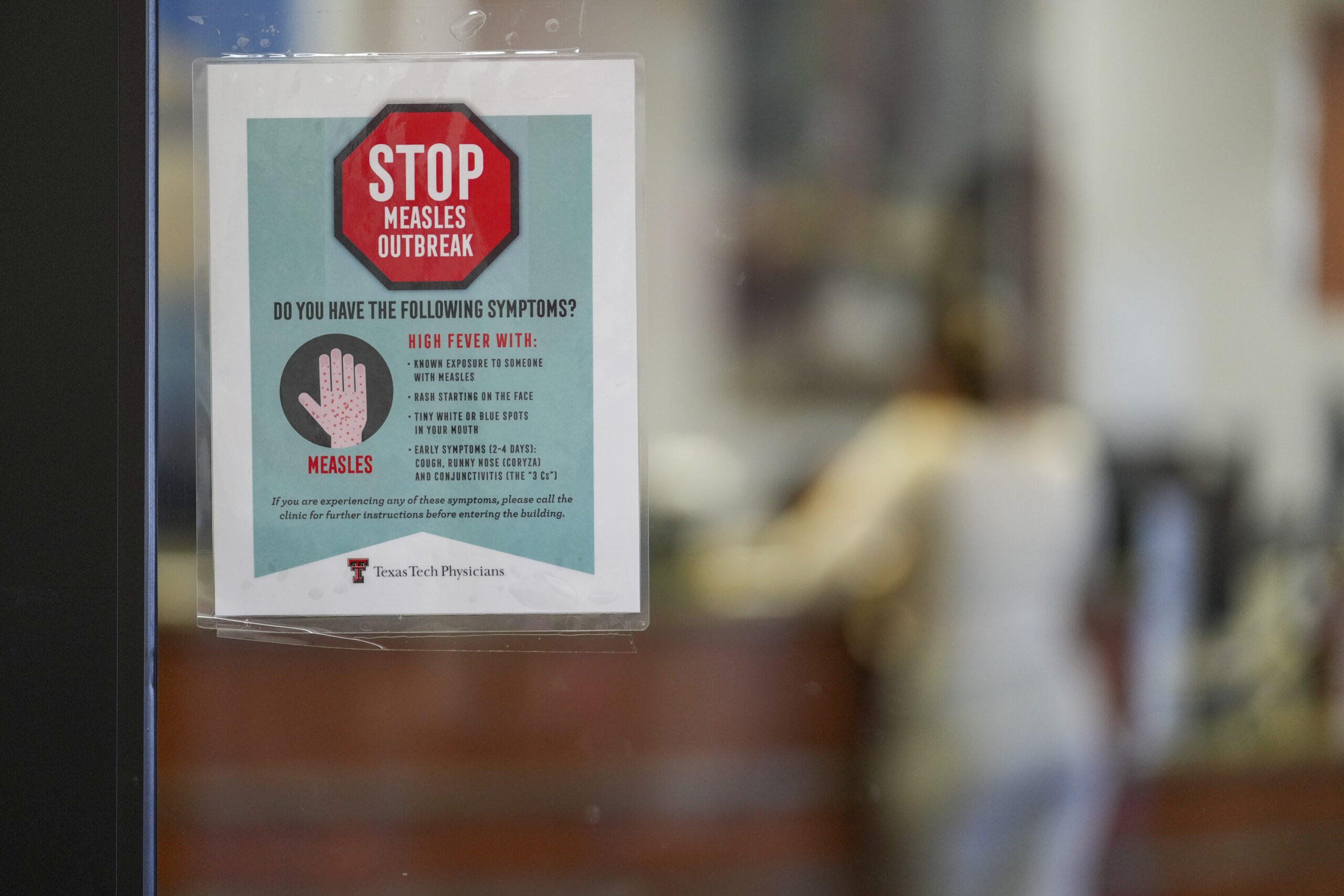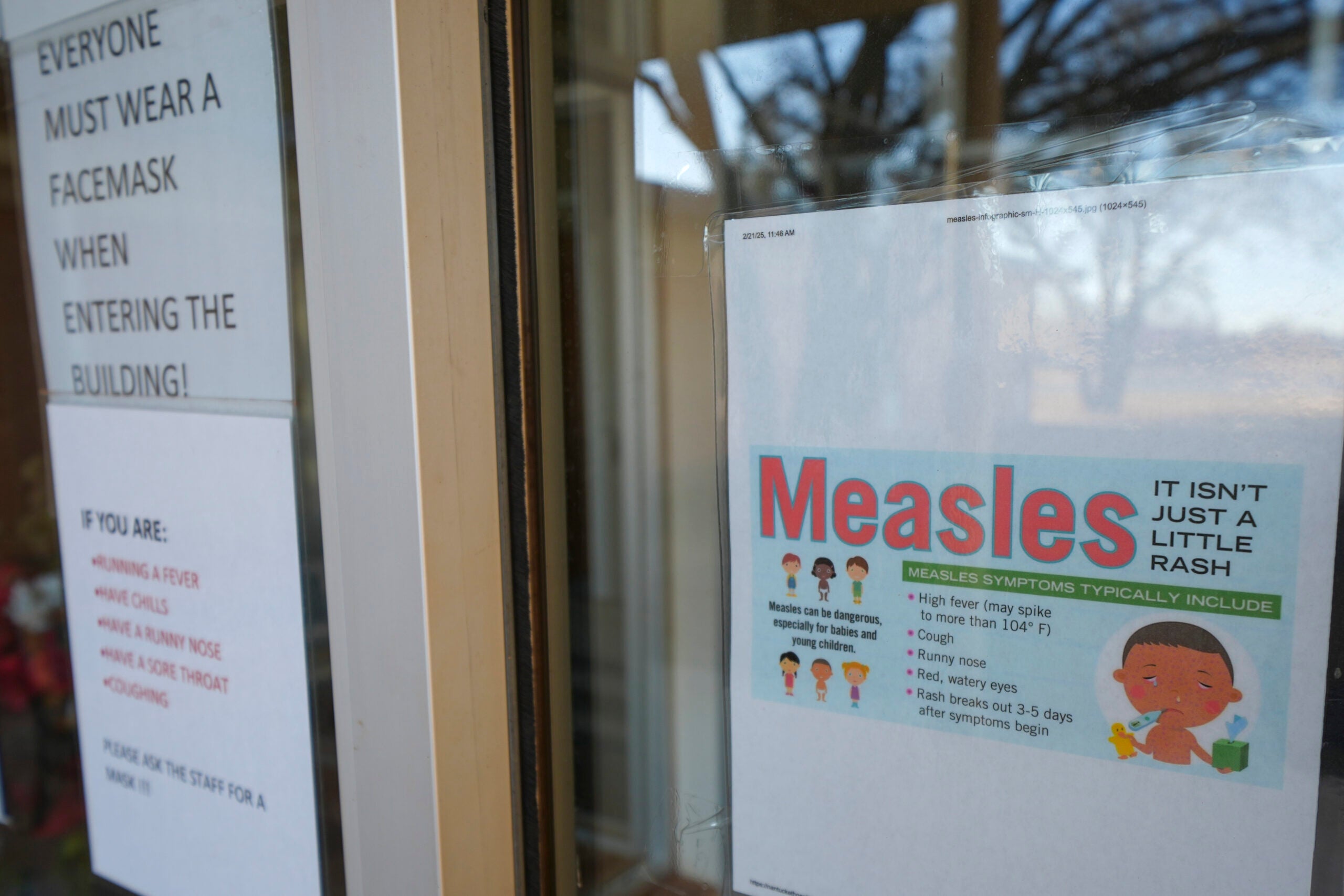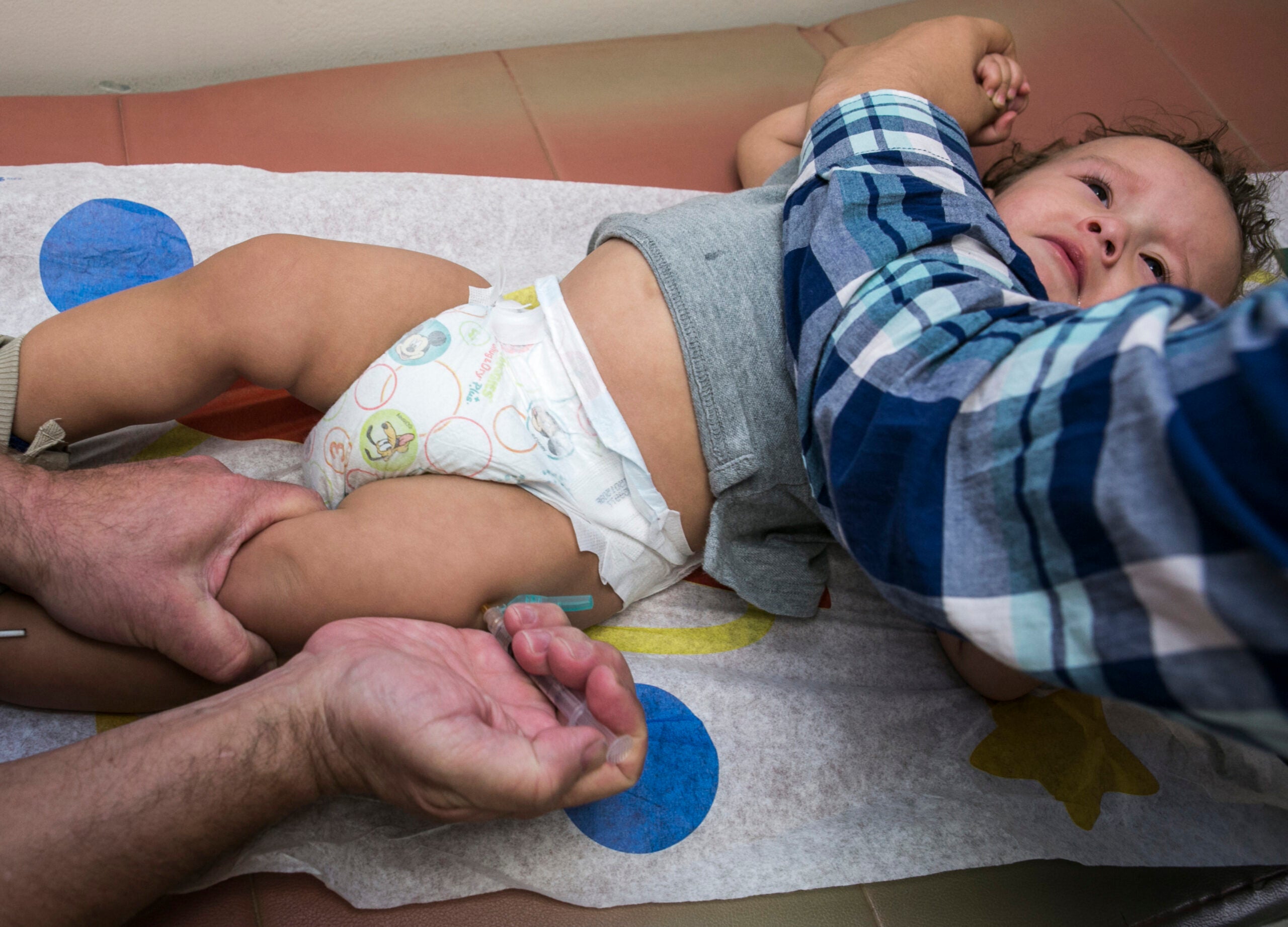Fewer kids in Wisconsin are vaccinated against measles than they were in 2013, and children in the state now have the second-worst vaccination rate for the disease in the United States.
Meanwhile, a Texas-centered measles outbreak has grown to almost 100 cases.
In 2023, the most recent year with available data, 81.6 percent of Wisconsin’s 2-year-olds had at least one dose of the measles vaccine, according to the Department of Health Services. That’s down from 88.2 percent in 2013.
News with a little more humanity
WPR’s “Wisconsin Today” newsletter keeps you connected to the state you love without feeling overwhelmed. No paywall. No agenda. No corporate filter.
Some Wisconsin counties saw much bigger drops during that decade, according to DHS data.
In Monroe County, the percentage of 2-year-olds with one measles shot went from 81.6 percent in 2013 to 58.9 percent in 2023. Iron County saw a drop from 93.3 percent to 72.5 percent. And Marquette County’s rate fell from 84 percent to 65.4 percent.
The Centers for Disease Control and Protection, the federal public health authority, recommends a 95 percent community vaccination rate to prevent measles outbreaks. Public health guidelines call for kids to get a vaccine after their first birthday, and another around age 5.
The authority estimates 84.8 percent of Wisconsin’s kindergartners had both doses in the 2023-24 school year. Only Alaska ranked lower.
The percentage of 5- and 6-year-olds with both shots varies widely across Wisconsin’s counties.
County health officer gives local perspective
More families in rural, northern Florence County are requesting waivers from school vaccination requirements, said Annette Seibold, that county’s top public health official.
Seibold said her department calls families whose kids haven’t shown up on vaccination rolls in time.
“That’s when we would find out, from the parents or caretaker, that they’re not going to vaccinate,” she said.
A spokesperson for DHS said local health departments can use the state’s centralized immunization registry to make those calls, but that not all counties do.
Seibold said she believes false information about vaccines is behind parents’ decisions, rather than lack of access. Her department runs a mobile clinic and gives measles shots in schools.
She said it also gives free vaccines to eligible kids via the CDC’s Vaccines for Children program.
“About half of our school population is eligible for free and reduced lunch. So that gives you an idea of how many are, generally, then eligible for that VFC, that Vaccines for Children program,” she said.
Infectious disease professor has diagnosis
There are several reasons for Wisconsin’s low and declining measles vaccination rates, said Jim Conway, a pediatric infectious disease professor at the University of Wisconsin’s medical school.
A “recency phenomenon” is one of them, he said.
“These ‘old-fashioned diseases,’ as one parent said to me a couple weeks ago, just aren’t as concerning,” he said. “Because they’re considered diseases that affected all our parents, but they don’t see them as a current threat.”
He said he believes the COVID-19 pandemic also made people feel more confident second-guessing what they’re told by health care providers.
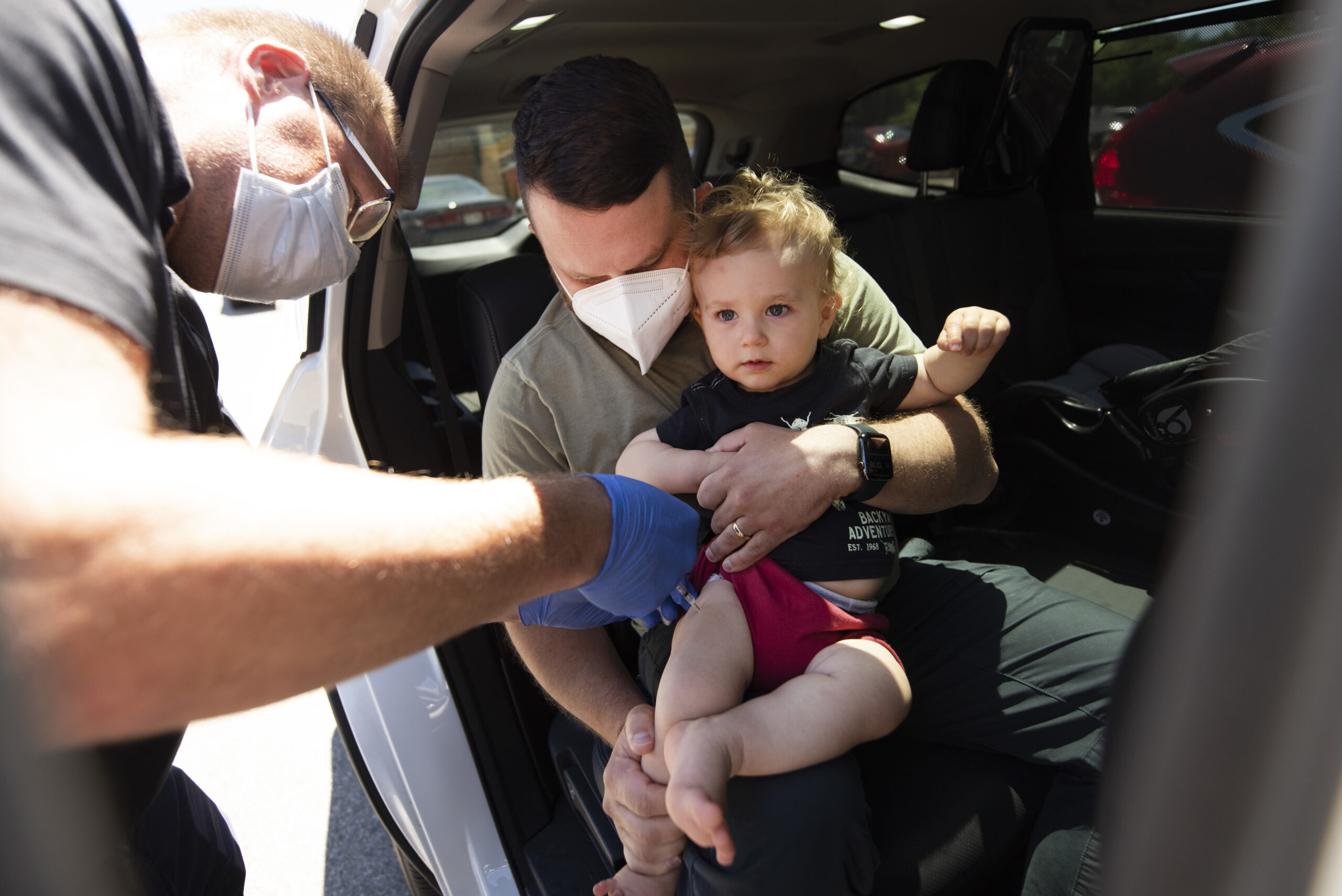
Conway said access is an issue, too. More health systems are prioritizing emergencies and care for already-sick people over preventive programs like vaccinations, he said.
He called measles “one of the most contagious things on the planet.”
“All you need is a couple of those counties to all go in the wrong direction,” Conway said. “And lo and behold, just like West Texas, then you’ve got a whole area where there’s enough vulnerable people that an outbreak can happen.”
Vaccination patterns differ across Wisconsin
Four Wisconsin counties registered slight increases in 2-year-olds’ measles vaccination rates in the 10-year DHS data: Fond du Lac, Brown, Pierce and St. Croix.
Milwaukee and Dane counties saw decreases of less than 3 percentage points.
Large declines between 2013 and 2023 happened in Richland County, whose rate fell from 83.3 percent to 65.3 percent, and Bayfield County, which dropped from 86.6 percent to 70.7 percent.
Meanwhile, in two Wisconsin counties, less than half of kindergarten-aged children had both recommended measles shots in 2023 — Vernon County came in at 48 percent and Clark County at 46 percent.
Wisconsin Public Radio, © Copyright 2025, Board of Regents of the University of Wisconsin System and Wisconsin Educational Communications Board.



